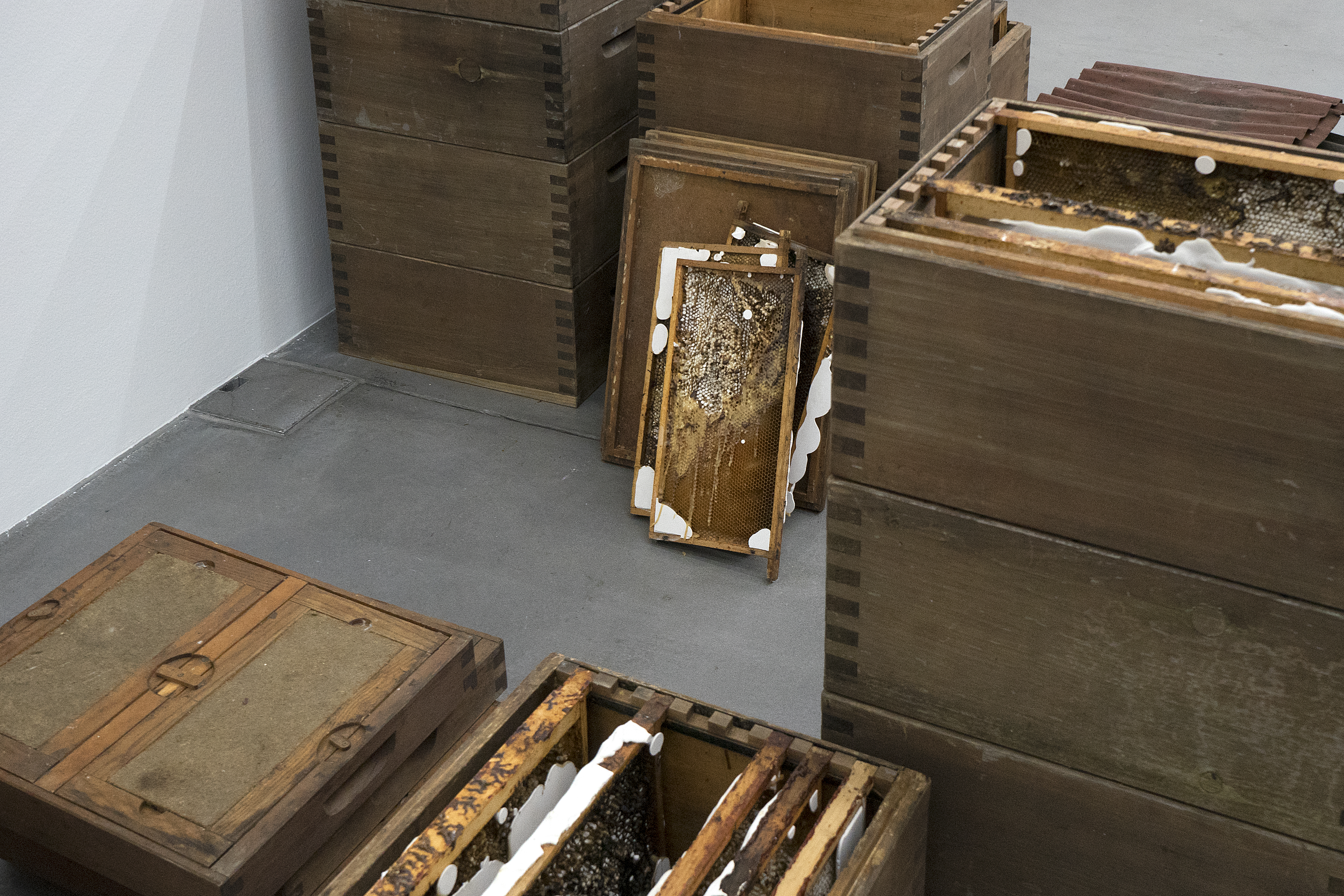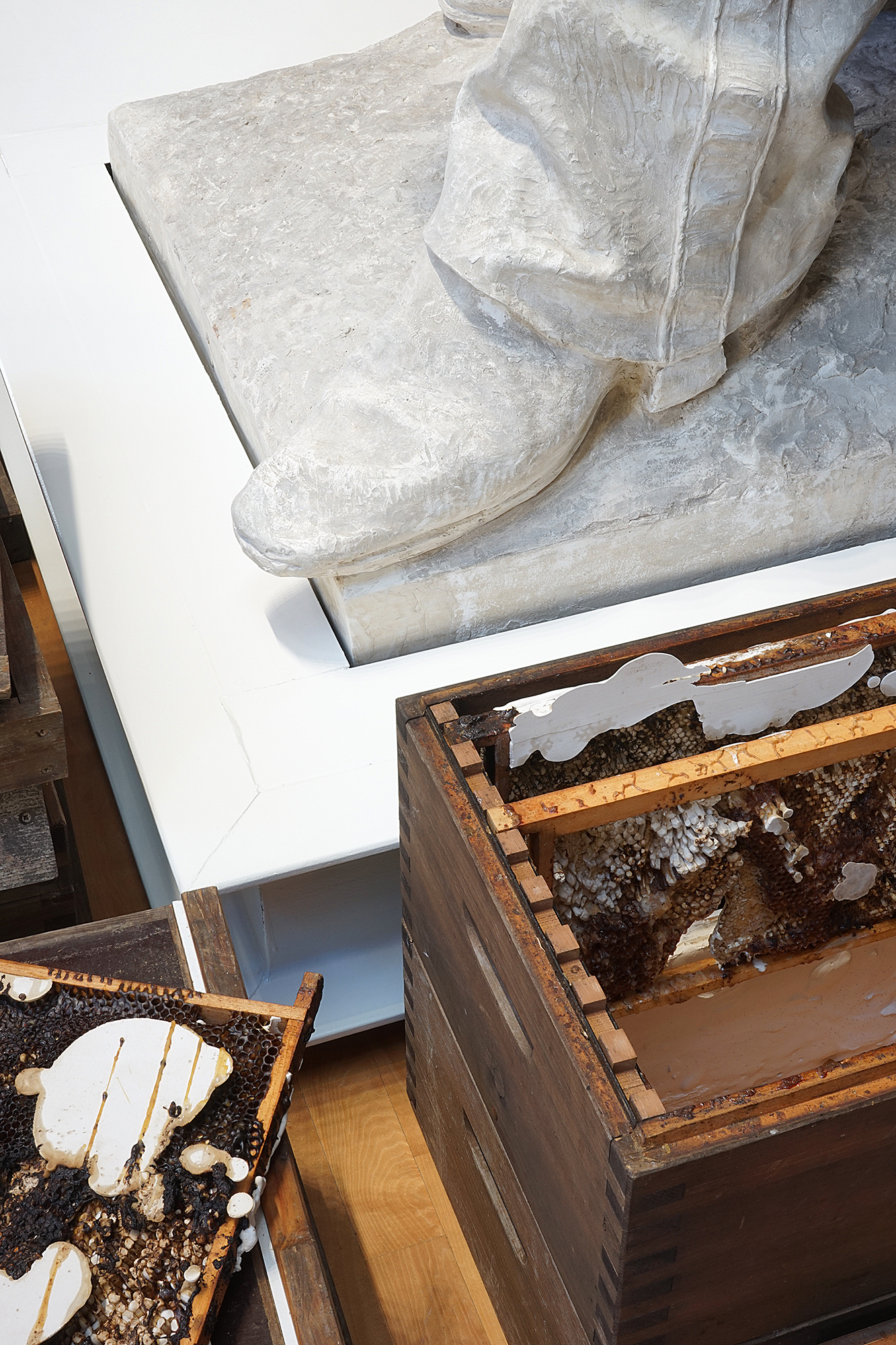︎ ︎︎
La mala mimesis, 2012-2016
Beehives, plaster, beeswax
“Pascal Schwaighofer's intervention in the rooms of the Vincenzo Vela Museum develops from a comparison with the famous high relief The Victims of Labor (1882). The Ticino sculptor's masterpiece, conceived as a tribute to the miners who died on the construction sites of the Gotthard railroad tunnel (1872-82), constitutes one of the first monuments erected in Europe to honor the working class.
Avoiding a purely analytical and historical reading of the theme, Schwaighofer presents in the exhibition, in close dialogue with the works in the collection, a series of plaster casts of beehives, made with a technique that refers back to Vela's original models. At the same time, the beehives refer to the metaphor of the beehive, its complex iconography and its interpretation in political and ideological terms, stimulating a broader critical reflection on the problem of labor. Also linked to the economic system is the title of the installation, which refers to the concept, elaborated by the physiocratic school, of the “sterile class”: the class that creates nothing but transforms everything.
To complement the works presented in situ, an illustrated catalog will be given in print, accompanied by a dialogue between the artist and economist Christian Marazzi, focusing on the social and economic implications of labor, and a critical essay by art historian Edith Krebs.”
Translated from the Italian pressrelease La classe sterile, Museo Vincenzo Vela, 2016
Beehives, plaster, beeswax
“Pascal Schwaighofer's intervention in the rooms of the Vincenzo Vela Museum develops from a comparison with the famous high relief The Victims of Labor (1882). The Ticino sculptor's masterpiece, conceived as a tribute to the miners who died on the construction sites of the Gotthard railroad tunnel (1872-82), constitutes one of the first monuments erected in Europe to honor the working class.
Avoiding a purely analytical and historical reading of the theme, Schwaighofer presents in the exhibition, in close dialogue with the works in the collection, a series of plaster casts of beehives, made with a technique that refers back to Vela's original models. At the same time, the beehives refer to the metaphor of the beehive, its complex iconography and its interpretation in political and ideological terms, stimulating a broader critical reflection on the problem of labor. Also linked to the economic system is the title of the installation, which refers to the concept, elaborated by the physiocratic school, of the “sterile class”: the class that creates nothing but transforms everything.
To complement the works presented in situ, an illustrated catalog will be given in print, accompanied by a dialogue between the artist and economist Christian Marazzi, focusing on the social and economic implications of labor, and a critical essay by art historian Edith Krebs.”
Translated from the Italian pressrelease La classe sterile, Museo Vincenzo Vela, 2016


